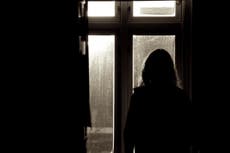‘I can’t see to run’: 1 in 12 blind and partially sighted people face domestic abuse, first study finds
Victims told of partners deliberately moving objects to make them fall over and hiding medication

One in 12 blind and partially sighted people in the UK have been subjected to domestic abuse by their partner, a new study has found.
Research, conducted by Vision Foundation, a charity centred on sight loss, as well as prominent domestic abuse organisation, SafeLives, estimated this amounts to 188,000 visually impaired people in the UK suffering psychological, physical or financial abuse from their partners.
Victims told of how routine forms of domestic abuse were compounded by the vulnerabilities of being blind or partially sighted - relaying accounts of partners deliberately moving objects to make them fall over, and hiding their medication.
Other reports included abusers capturing them on film without their awareness or consent, watching them while they did not know, taking away their guiding equipment, as well as refusing to take them to appointments.
Researchers noted victims voiced “very high levels of fear” of being unaware of where a blow or item could come from, also raising fears their children could be hurt while they were there.
“I can’t go anywhere as I keep thinking he is probably round the corner because I can’t see. I can’t see to run,” one victim said.
The study, which is the first research into domestic abuse in the visually impaired community, heard from many victims who said friends and relatives did not believe them when they confided in them about the mistreatment. While some told of how loved ones tried to convince them to stay with abusers - saying they would not be able to manage without their help.
Suzanne Jacob, chief executive of SafeLives, said: “Our team found a stark contrast between the lack of information on domestic abuse in relation to blind and partially sighted people and the very high number of people with personal experience who wanted to take part in this research. Their experiences confirm the urgent need for action.”
The report, titled The Unseen: Blind and partially sighted people’s experiences of domestic abuse, found that the professionals polled pinpointed a worrying dearth of awareness of accessibility choices for the community.
While organisations and professionals in the two separate sectors of sight loss and domestic abuse were found to be lacking understanding of these issues, with researchers suggesting recommendations for how to improve the situation.
Olivia Curno, chief executive of Vision Foundation, said: “We were aware of the high risk of domestic abuse that disabled people face, but heard only occasional, anecdotal accounts of visually impaired victims from our partner organisations.”
Before this new research, “nothing existed which recorded the experiences of visually impaired victims and survivors of domestic abuse, nor the myriad barriers they face in getting support”, she noted.
Ms Curno added: “We were shocked by what the research uncovered. It’s devastating to read, far worse than we had anticipated.”
Among the wider population, between two and three women are murdered each week by their partners or ex-partners in England and Wales. One in four women will suffer domestic abuse at some point during their lives - with domestic abuse having a higher rate of repeat victimisation than any other crime.




Join our commenting forum
Join thought-provoking conversations, follow other Independent readers and see their replies
Comments